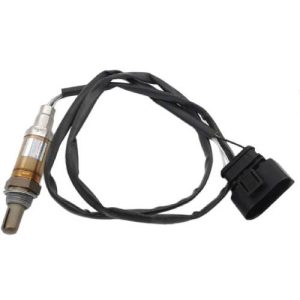Your cart is currently empty!
O2 Sensor Bung for Your Vehicle
How to Choose the Right O2 Sensor Bung for Your Vehicle?Vehicle maintenance guide
In the ever-evolving landscape of vehicle maintenance, one crucial component that demands attention is the O2 sensor bung. As a seasoned authority in the realm of automotive news, we delve into the intricacies of selecting the appropriate O2 sensor bung for your vehicle. This article serves as your comprehensive guide to understanding, choosing, and installing the ideal O2 sensor bung.

The Significance of the O2 Sensor Bung
The O2 sensor bung, a small but vital part of the vehicle's exhaust system, provides the platform for mounting the oxygen sensor. It's essential for accurate measurements of exhaust gases, enabling the engine control unit (ECU) to fine-tune the air-fuel mixture for optimum combustion efficiency. Choosing the right O2 sensor bung is paramount to ensure the sensor's accurate readings and overall engine performance.
Factors to Consider When Selecting an O2 Sensor Bung
Material: O2 sensor bungs are commonly available in stainless steel or mild steel. Stainless steel offers better corrosion resistance, making it ideal for longevity.
Thread Size: Select an O2 sensor bung with the correct thread size to ensure a secure and accurate fit for your oxygen sensor.
Weld-On or Clamp-On: O2 sensor bungs come in weld-on or clamp-on variants. Weld-on bungs require welding onto the exhaust system, providing a permanent solution. Clamp-on bungs, on the other hand, offer a non-invasive option for those hesitant to weld.
Steps to Properly Install an O2 Sensor Bung
Locate the Ideal Spot: Choose a location on the exhaust system where the sensor can be mounted securely and where the sensor's tip protrudes into the exhaust stream.
Prepare the Area: If using a weld-on bung, clean and prep the area for welding. For a clamp-on bung, ensure a snug fit around the exhaust pipe.
Weld or Clamp: Weld-on O2 Sensor bungs require careful welding for a secure connection. Clamp-on bungs can be tightened around the exhaust pipe using appropriate tools.
Mount the Sensor: Thread the oxygen sensor into the O2 Sensor Bung and tighten it to the recommended torque specification.
Conclusion
In conclusion, the proper selection and installation of an O2 sensor bung significantly impact your vehicle's performance and emissions control. By considering factors like material, thread size, and installation method, you ensure an accurate and secure fit for your oxygen sensor. Armed with this knowledge, you can confidently maintain your vehicle's engine health, efficiency, and adherence to emissions standards. As an informed vehicle owner, your commitment to the meticulous selection of an O2 sensor bung is a testament to your dedication to optimal vehicle performance.






Leave a Reply